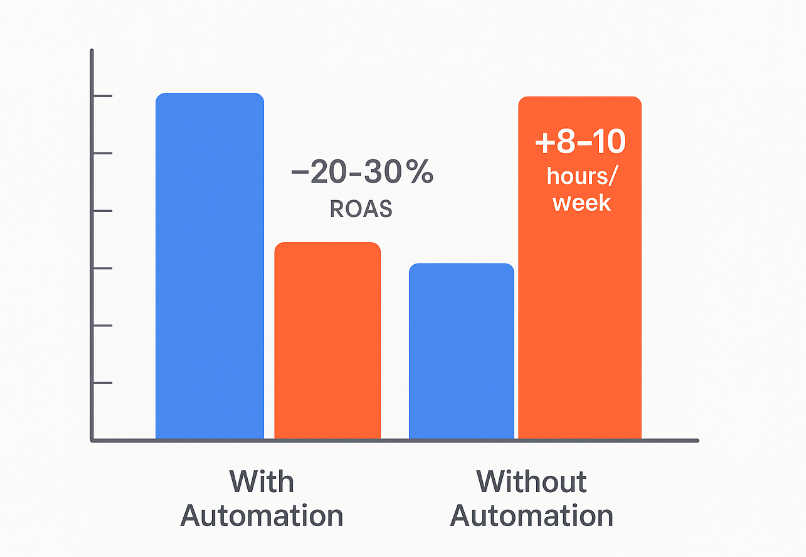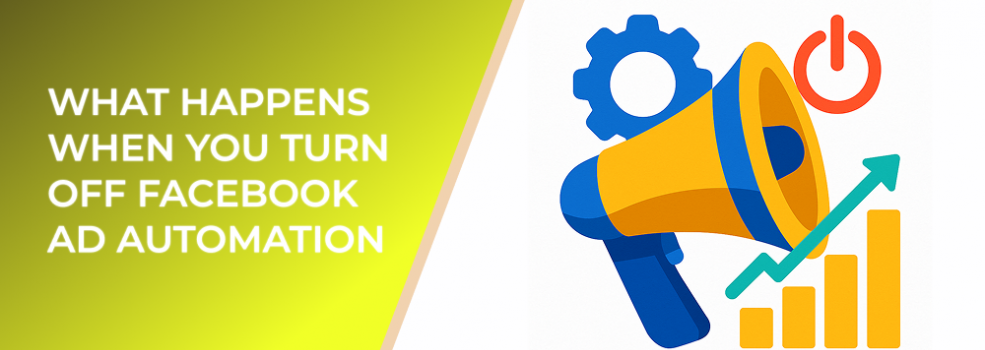Facebook’s automation tools—like Advantage+ campaigns, automated placements, and budget optimization—use AI and machine learning to make decisions about who sees your ads, when, and where. These systems process millions of data points in real time to improve results with minimal manual input.
Automation helps advertisers save time, reduce costs, and scale campaigns effectively. According to Meta, advertisers using automation features see up to 32% better performance compared to manual setups.
When you turn automation off, you take back control—but also inherit the complexity that comes with managing everything manually.
1. You’ll Need to Manage Targeting Manually
Automation dynamically adjusts targeting based on audience behavior, device type, and ad performance. Without it, you’ll need to create and test multiple audiences yourself.
This manual targeting can help in some niche cases—like when your audience is highly specific—but it also increases workload and risk of inefficiency. For example, automated lookalike audiences can outperform manual interest targeting by up to 25%, according to Meta internal data.
Without automation, you’ll spend more time refining who sees your ads, often with less precision.
2. Budget Allocation Becomes Less Efficient
Facebook’s automated budget optimization redistributes spend across ad sets and placements that perform best. Turning this off means you’ll need to manually monitor and shift budget between campaigns.
This may give you more control, but it comes at a cost. Data from WordStream shows that advertisers using automated budget allocation achieve 20–30% higher return on ad spend (ROAS) on average.
Manual allocation can work for small test campaigns, but it’s time-intensive and makes scaling difficult.
3. Ad Performance May Drop Without Machine Learning Adjustments
Automation continuously learns from your campaign data—ad clicks, conversions, and engagement metrics—to optimize delivery. When you disable it, you lose that adaptive optimization.

Expected drops in performance metrics and increased time investment when automation is disabled
Without automated bidding or delivery adjustments, performance can stagnate. You might notice:
-
Higher cost per acquisition (CPA)
-
Fewer impressions in high-performing placements
-
Slower optimization after changes
Meta’s Advantage+ campaigns, for instance, automatically test multiple creative combinations and placements to find what converts best. Turning this off forces you to run manual A/B tests, which are slower and more limited in scope.
4. You’ll Spend More Time on Campaign Maintenance
Facebook automation reduces repetitive tasks like bid adjustments, audience refreshing, and placement testing. Turning it off means more time spent managing these tasks manually.
For example, advertisers using automated rules can save up to 10 hours per week on campaign maintenance. Without them, you’ll need to monitor data constantly to prevent overspending or underdelivering.
While manual control can help refine strategies for small-scale campaigns, it’s not sustainable for larger ones.
5. Manual Control Can Lead to Better Learning (But Slower Results)
There’s a silver lining to turning off automation—you gain insight into how each variable affects performance. Manually testing placements, creatives, and bids can deepen your understanding of your audience.
However, this process takes time and data. Without Facebook’s algorithm optimizing in real time, results can be inconsistent. Expect slower learning periods and more budget spent on trial and error.
Automation learns continuously from every impression and conversion—something humans simply can’t replicate at scale.
6. The Balance: Hybrid Approach Works Best
The best strategy isn’t choosing between full automation or full manual control—it’s combining both.
For example:
-
Use automated placements but manually segment audiences.
-
Allow automated bidding while controlling budget caps.
-
Rely on automation for creative testing, but fine-tune copy and visuals yourself.
This hybrid approach gives you the efficiency of AI while maintaining strategic oversight.
Brands that combine automation with manual oversight report up to 40% higher campaign efficiency than those using purely manual setups, according to Meta.
7. When It Makes Sense to Turn Off Automation
There are specific cases where manual control makes sense:
-
Testing new offers or niches where algorithms don’t have enough data yet.
-
Running small, local campaigns with clearly defined audiences.
-
Creative testing where you want even ad delivery for comparison.
For established, data-rich campaigns, however, automation typically delivers better ROI and scalability.
Related Articles from LeadEnforce
-
Meta Ad Campaign Objectives Explained: How to Choose the Right One
-
How to Analyze Campaign Data to Identify Growth Opportunities
Final Thoughts
Turning off Facebook ad automation can give you more control, but it also increases workload and reduces efficiency. Manual setups can be valuable for testing and learning, yet automation remains key for scaling and optimizing performance.
The smartest advertisers use automation strategically—letting Facebook’s AI handle repetitive optimizations while they focus on creative strategy and big-picture goals.

